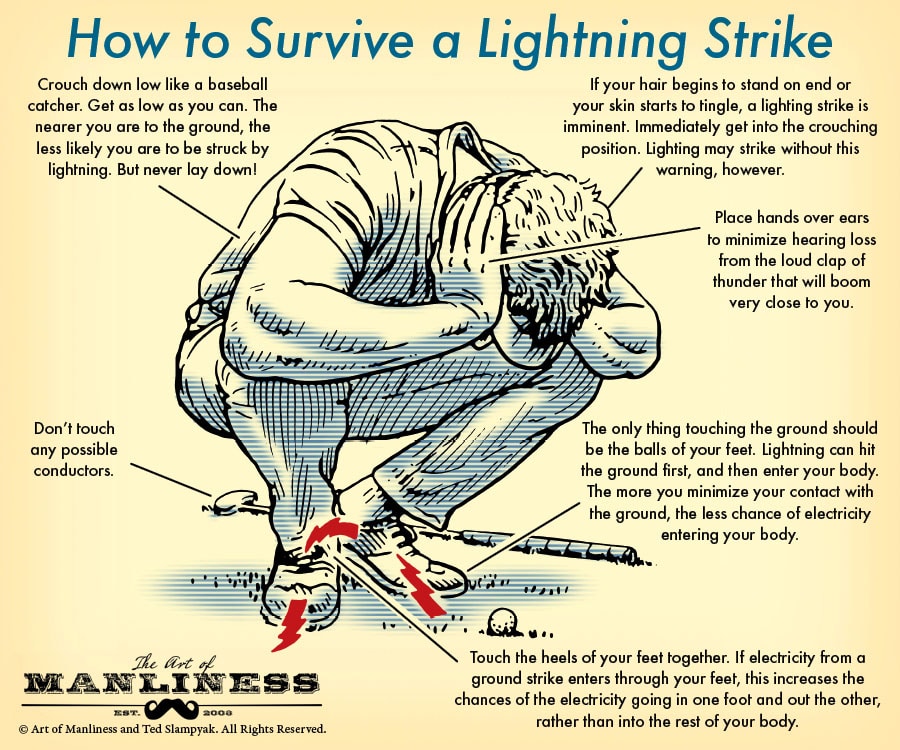
The best way to survive a lightning strike is to avoid being outdoors in the first place. Use the 30/30 Rule: If, after seeing lightning, you can’t count to 30 before hearing thunder, get inside a building or car. Don’t go outside until 30 minutes after the last clap of thunder.
If you’re caught outdoors and can’t take cover during a lightning storm, seek shelter in a low area under a dense growth of small trees (don’t stand too close to them, though). Avoid tall, isolated objects like tall trees and flagpoles, since lightning often (but not always) tends to strike the tallest object in an area.
If you’re in an open area, go to a low area, like a valley or a ravine (but be alert for flash floods). In all cases, avoid any size body of water, as water is a conductor of electricity.
If you’re caught outdoors and see signs that a lightning strike is imminent (your hair stands on end, your skin tingles, you hear a buzzing, clicking, hissing, or cracking sound, or see metal objects emitting a soft, blue-white glow) or you simply think you’re in danger, immediately assume the position above to increase your chances of surviving, should the lightning strike you directly, or close to you.
Illustration by Ted Slampyak
Reprinted from The Art of Manliness.
[amazon asin=B009V1C0ES&template=*lrc ad (left)]
[amazon asin=B0040CBRRO&template=*lrc ad (left)]
[amazon asin=B00ISD3X1Y&template=*lrc ad (left)]
[amazon asin=B004V95TYI&template=*lrc ad (left)]




